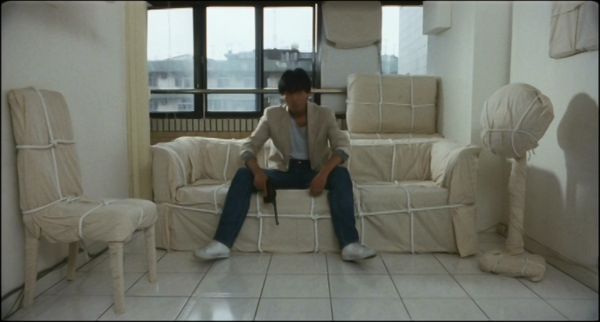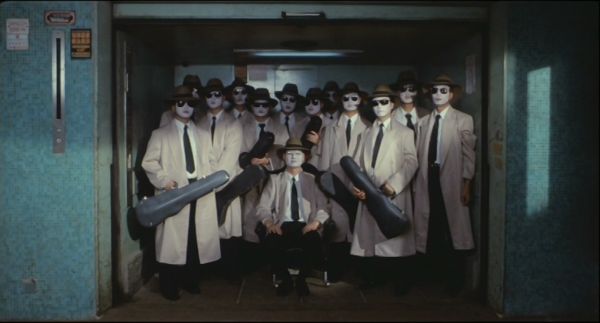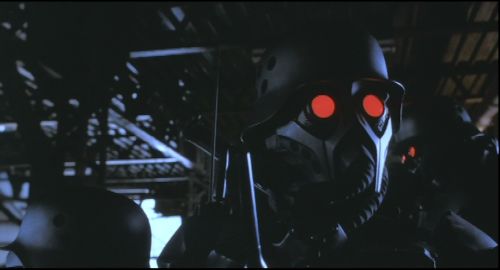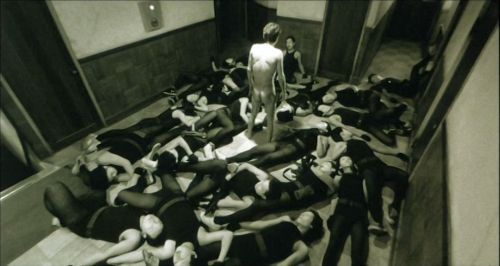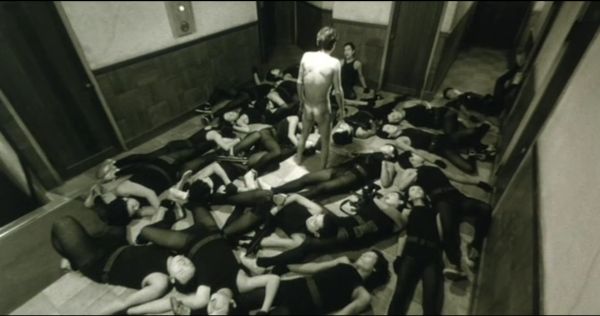A Fine Example of Weird Japanese Cyberpunk
by Bolt Vanderhuge
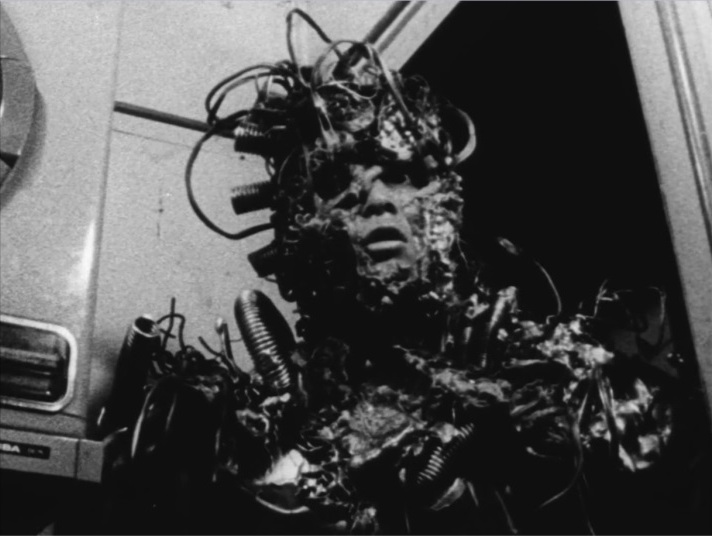
I am at something of a loss as to describe what Tetsuo: The Iron Man actually is, let alone what it’s about. It usually gets described as a cyberpunk film, but to be honest that’s kind of stretching it. It definitely has the gritty “low life” aspect, but not so much the “high tech” part. I think it would be more fair to call it a Cronenberg body horror film, mainly because that’s the only other experience I have with the kind of gory surrealist body horror that this film revels in. But this film doesn’t play by any rules –it’s underground, yo- so much so that it takes over seven minutes of its 67 minute length to even let you know the title of the movie you’re watching.
It reminds me a lot of the 1977 film Eraserhead by David Lynch in how it was shot in black and white (with the harsh lighting that often goes with that), mostly takes place in a tiny apartment, and is just generally weird and kind of hard to follow in terms of story and plot, at least the first time you watch it. This movie actually does have a pretty straightforward story of revenge against a Japanese salaryman and his girlfriend by someone who apparently likes metal as much as they like having sex while someone they just ran over watches them.

Both the sexualization of vehicular homicide and the transformation body horror remind me a lot of films by David Cronenberg, though. The main difference is that most of Cronenberg’s films tend to be a bit more straightforward, even if they get a bit surrealist at times. Tetsuo: The Iron Man by contrast is mostly surrealist with some brief respites of seeming reality to let the audience catch its breath before the really weird shit starts to happen.
A lot of reviewers would probably just satisfy themselves with making fun of a movie like this, and things like the robo futa rape would just help fuel that, but I honestly can’t say that this is a bad movie, it’s just fuckin’ weird is all. It’s the kind of thing you might expect a film student to make just to see if they can, with a very unusual sense of humor, and, like I mentioned before, it’s also very horny. There is a lot of stop-motion photography used that just adds to the strange feel of this movie, and the score by Chu Ishikawa really adds to this as well, giving it that ‘80s cyberpunk feel in spite of lacking the high-tech futuristic aspect (as far as I can tell). It very much feels like an anime, but is somehow more surreal because it isn’t.
So while I would generally recommend this movie, there’s a bit of a caveat there. Do you like watching weird shit? If you do, you’d probably like this movie, too. If not, then you should probably avoid it. Since you aren’t going to find this in Netflix and video stores aren’t really a thing anymore, if you do want to watch it without having to buy it first, fortunately archive.org has a copy of it with English subtitles.
…Maybe Check It Out:
Tetsuo: The Iron Man (1989 film)
Written, Directed, Edited, and Produced by Shinya Tsukamoto
Distributed by Kaijyu Theatres, Licenced by Arrow Video


